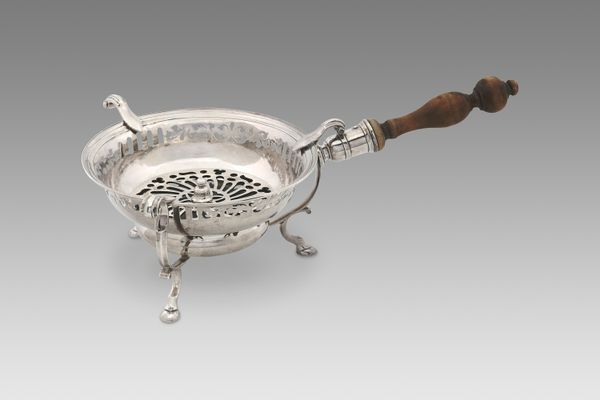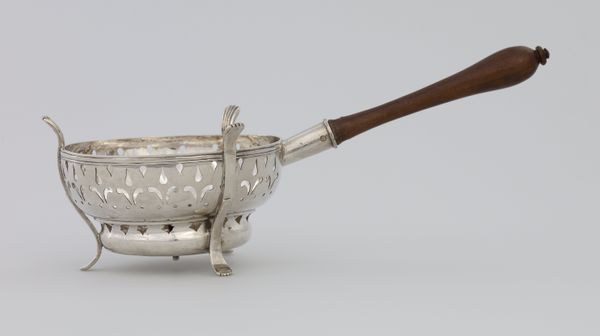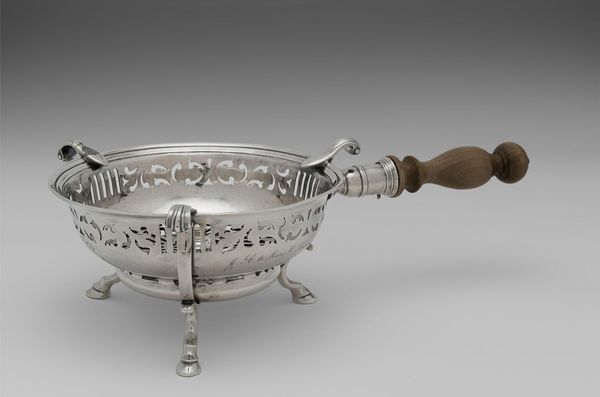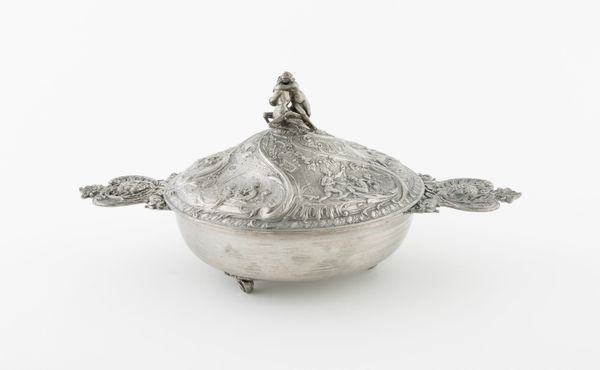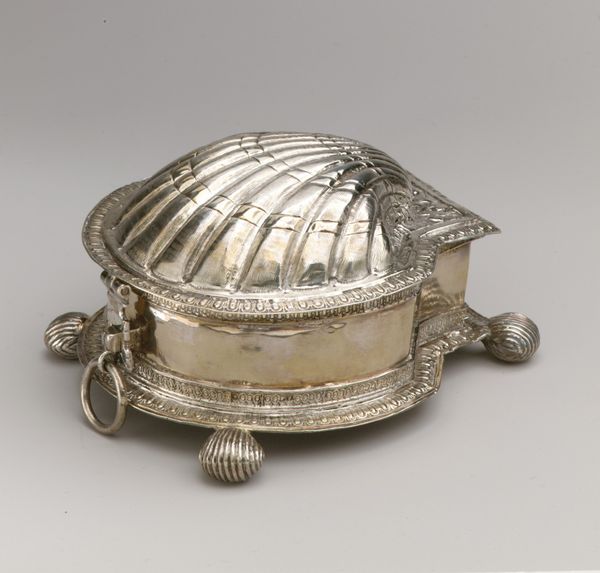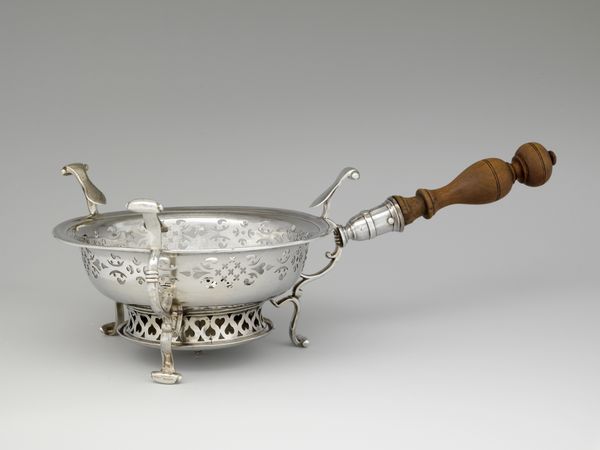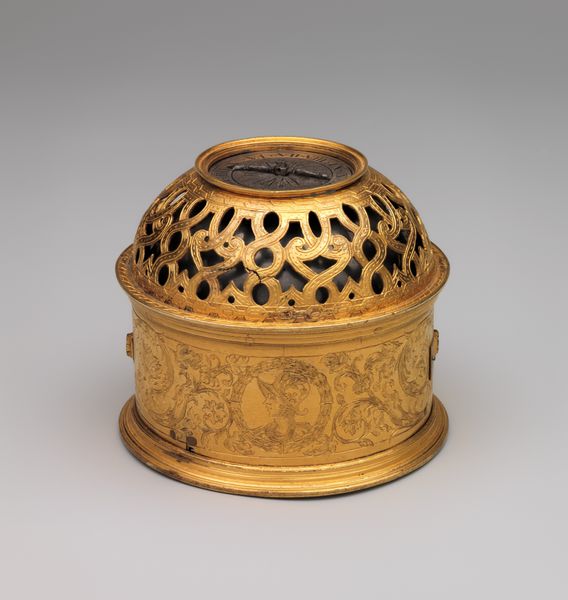
steel, carving, relief, sculpture, wood
#
steel
#
carving
#
relief
#
sculpture
#
wood
#
islamic-art
#
armor
#
decorative-art
Dimensions: 4 x 3 3/4 x 2 1/8 in. (10.2 x 9.5 x 5.4 cm)
Copyright: Public Domain
Editor: So, this decorative powder flask, dating back to around 1585, really grabbed my attention. The detail carved into what looks like wood and steel is amazing. What is it like to experience a piece like this from a historical perspective? Curator: This piece isn’t just a decorative object; it's a relic deeply embedded in the socio-political landscape of its time. Gunpowder wasn't merely a military tool, it symbolized power, technological advancement and trade routes. Its form blends artistry with functionality. Notice the steel and wood elements. Editor: I see the different materials. Can you elaborate on that a bit more? Curator: The combination of materials indicates its owner likely wanted elegance combined with robust practicality. Islamic art influence are intertwined and indicative of a globally connected 16th century. Editor: What strikes me most is its intricate carving. How was this flask used to convey identity, or perhaps project power and prestige within court society? Curator: Absolutely! Think of court culture in that era. Luxury goods like this flask, publicly displayed during hunts or court ceremonies, functioned as blatant signals of wealth and elevated status, further reinforcing existing hierarchies of privilege through conspicuous consumption of meticulously handcrafted luxury items. Who owned the newest weapon, how was its flask crafted. Editor: So, its purpose went way beyond simply carrying gunpowder? Curator: Precisely. This flask demonstrates not just skillful craftsmanship, but how objects served within elaborate performance and symbolic exchanges to express standing and control in that era. What about you? Editor: I’m left pondering the sheer human effort and artistry poured into something we now see encased in glass. Thinking about trade routes connecting cultures really changes the object's presence here in a museum. Thank you for sharing these perspectives. Curator: Indeed! Reflecting on those human stories helps us move beyond aesthetics to really consider these objects’ active roles shaping history.
Comments
No comments
Be the first to comment and join the conversation on the ultimate creative platform.
